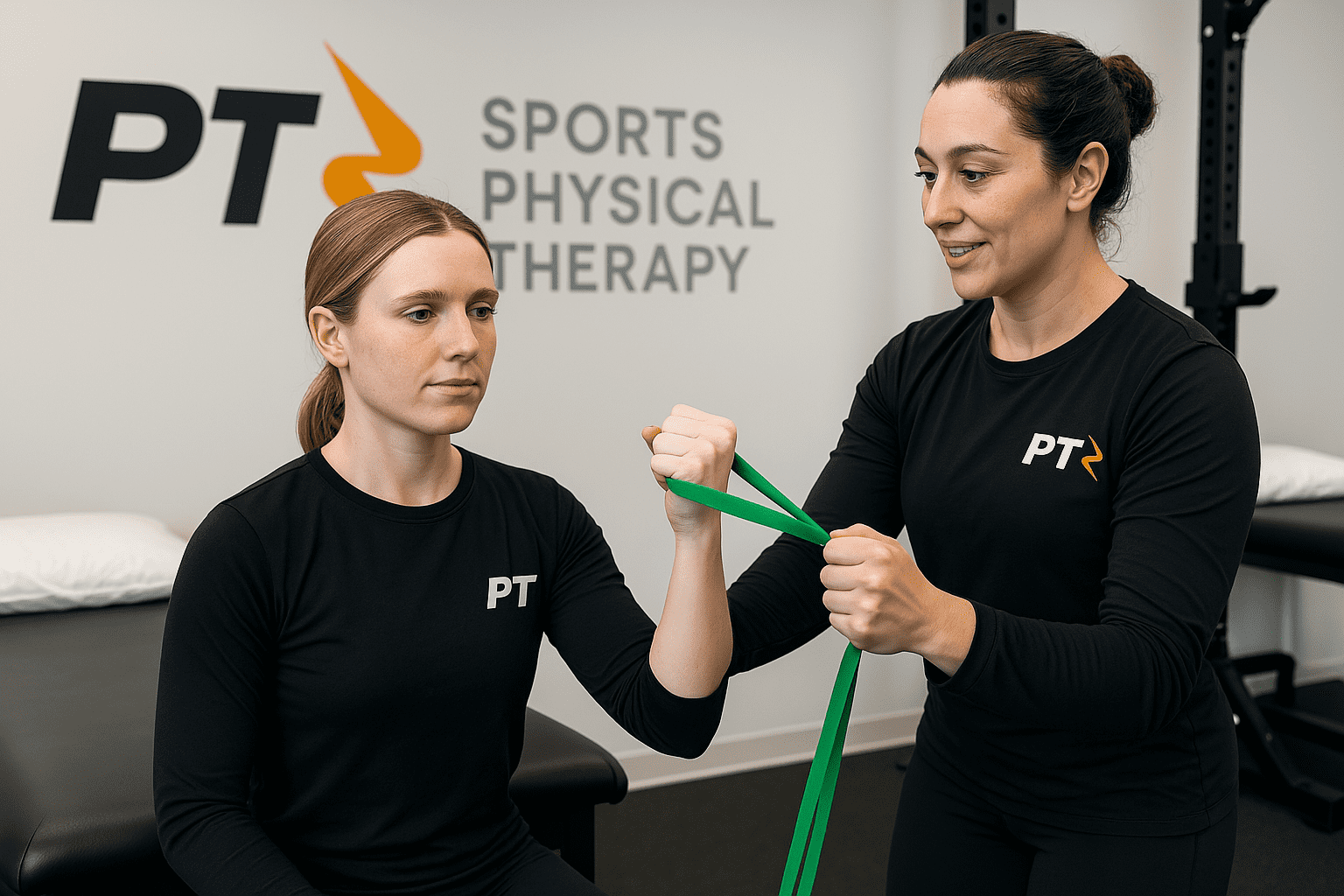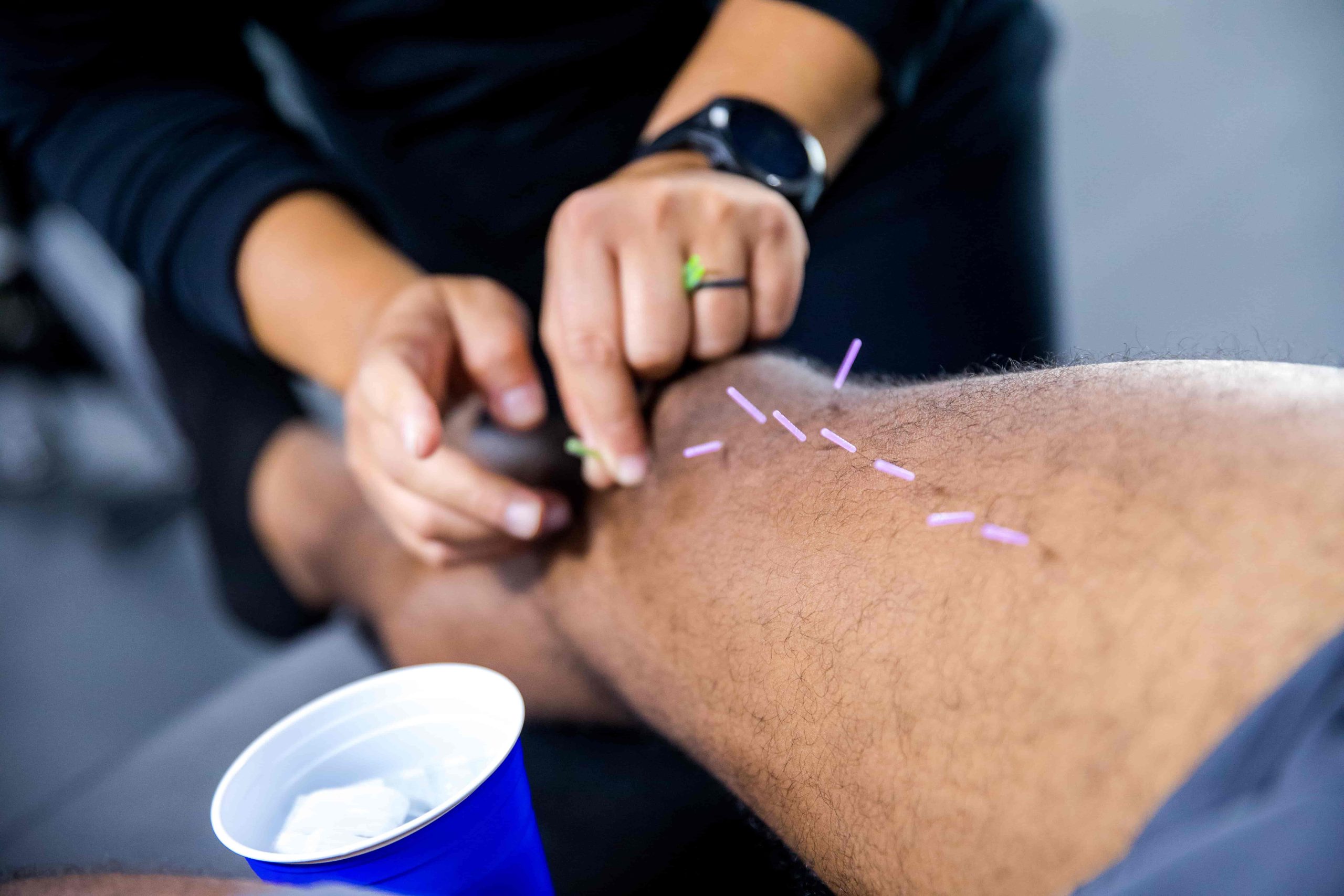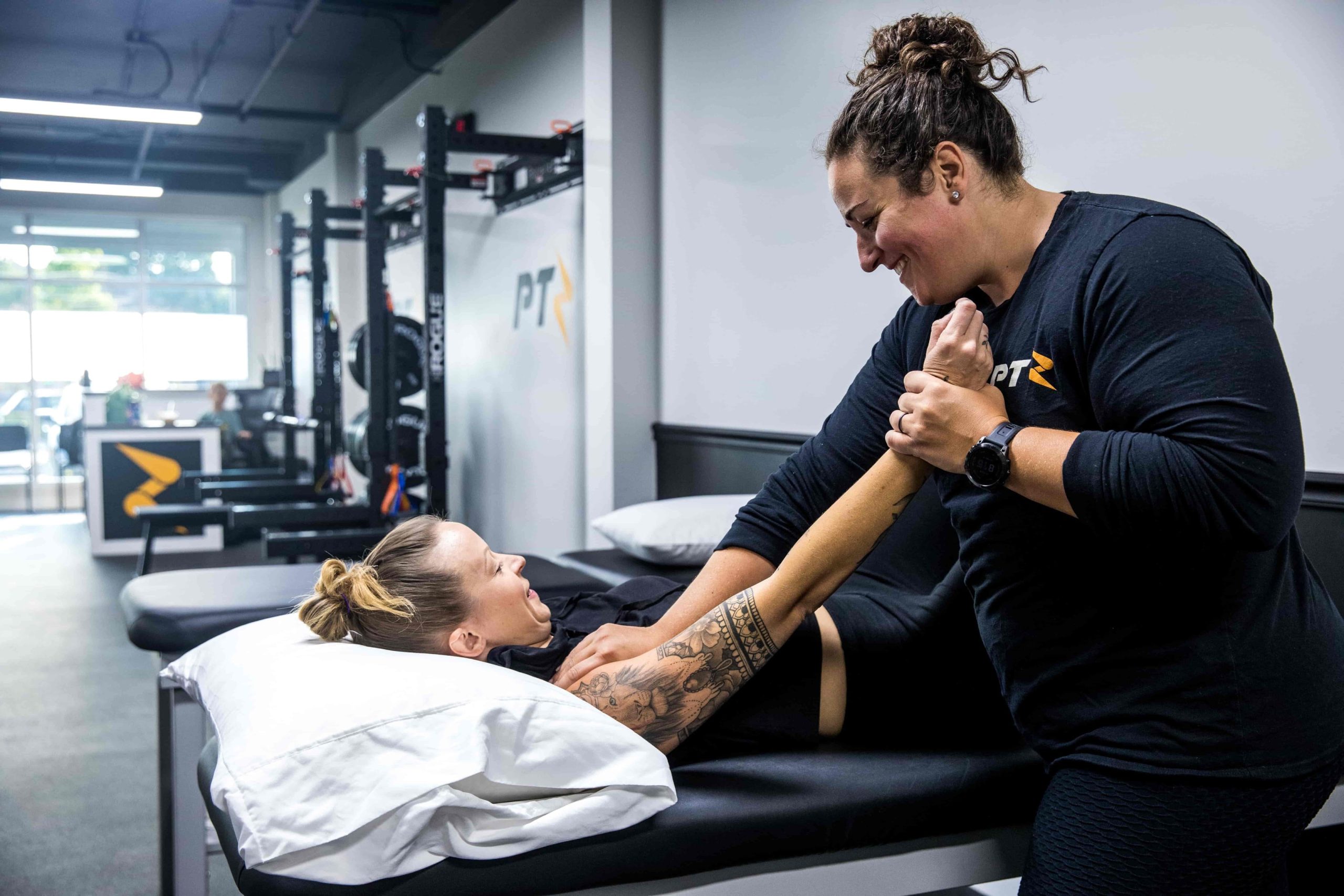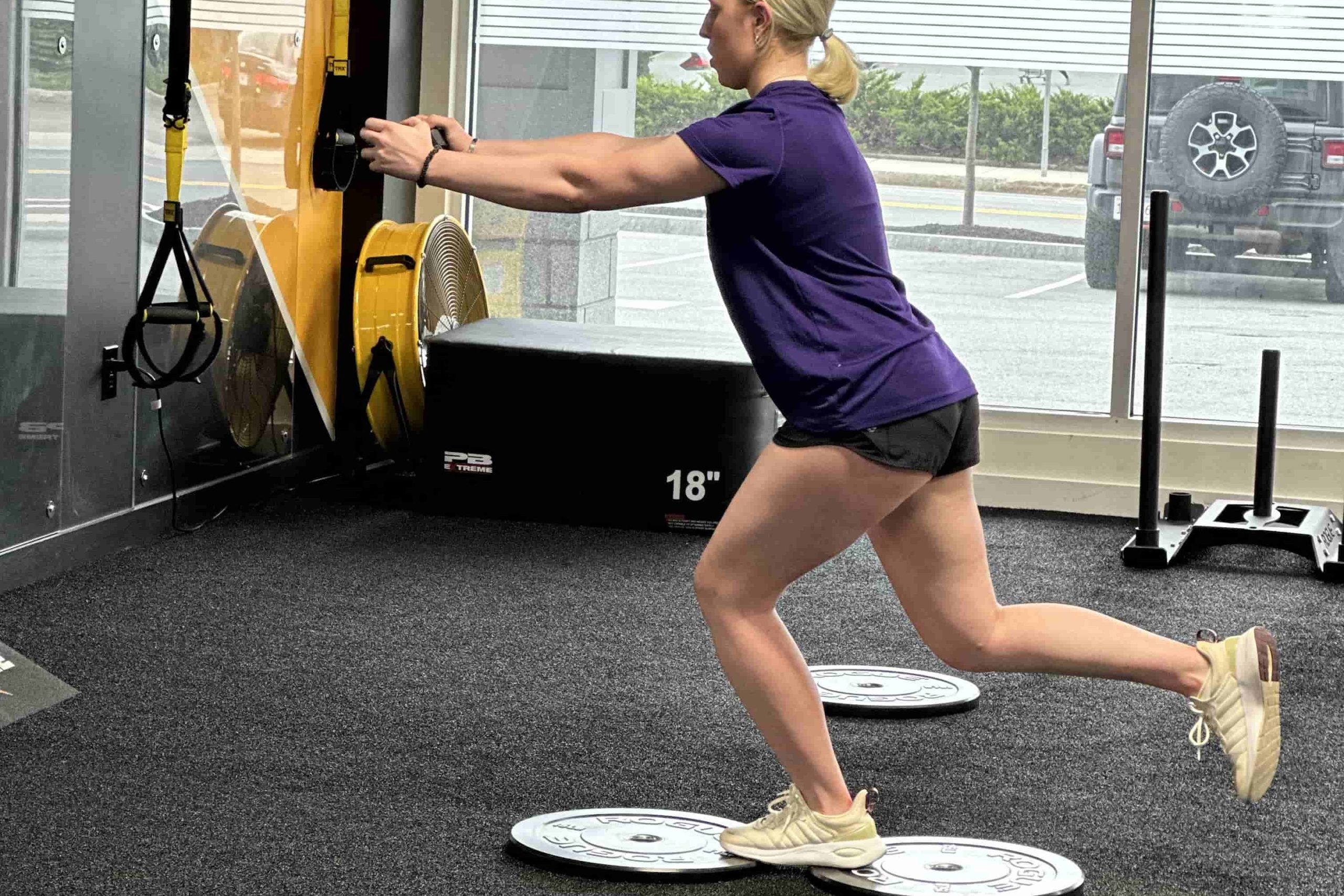If you’re struggling with pain or tenderness in the front of your shoulder, you’re not alone—bicipital tendinitis (also known as biceps tendonitis) can significantly limit your daily activities and upper body strength. At The PT Zone, we provide specialized therapies to reduce shoulder pain, restore mobility, and help you get back to your normal routine.
- Reduce inflammation and irritation of the biceps tendon
- Improve shoulder range of motion for greater functional movement
- Strengthen surrounding muscles to support the injured tendon
- Enhance posture and biomechanics to prevent future flare-ups

Let us help you move freely and
comfortably again
Bicipital tendinitis, sometimes called biceps tendonitis or biceps tendon inflammation, typically arises from repetitive overhead movements, improper shoulder mechanics, or direct strain on the biceps tendon. This irritation can lead to sharp pain or a dull ache in the front of the shoulder, making everyday tasks—like lifting objects or reaching overhead—uncomfortable. At The PT Zone, we understand how essential proper shoulder function is to your daily life, which is why we create individualized plans to address the pain and get you back to feeling strong and capable.
Our approach focuses on identifying the root causes of your discomfort, whether that’s poor posture, muscle imbalances, or insufficient shoulder stabilization. By combining manual therapy, targeted exercises, and soft tissue mobilization techniques, we work to reduce inflammation and enhance the tendon’s resilience. Through consistent care and attention to your unique needs, we aim to restore normal shoulder movement, allowing you to confidently resume your favorite activities.
Initially, we’ll conduct a comprehensive assessment to pinpoint the specific limitations in your shoulder mechanics and gauge the severity of your bicipital tendonitis. From there, we’ll tailor a rehabilitation program that may include exercises to improve shoulder blade stability, strengthen the rotator cuff, and correct postural deficiencies. Dry needling, cupping, or other specialized modalities may also be used to address pain and promote quicker healing.
Throughout the rehab process, we’ll track your progress and adjust the plan accordingly, ensuring you see steady improvements in strength and flexibility. Our team’s goal is to guide you toward a pain-free, fully functional shoulder, equipped with strategies to avoid re-injury down the road.
Our Therapies for Bicipital Tendinitis Recovery:
We combine hands-on therapy, guided exercise regimens, and innovative techniques—like dry needling or cupping—to alleviate biceps tendon pain, improve shoulder mobility, and help you move without worry. Our goal is to restore your function while minimizing the risk of re-aggravation.
-
Dry Needling

Experience quicker recovery and long-lasting pain relief with Dry Needling in Nahant, MA. Our targeted approach eases muscle tension, boosts healing, and restores comfortable, natural movement for daily life.
-
Cupping Nahant

Experience time-honored cupping therapy in Nahant, MA to relieve tight muscles, boost circulation, and fast-track your body’s healing process. Gentle suction eases soreness, reduces stress, and helps you stay active, flexible, and ready for whatever comes next.
-
Certified Manual Therapy Nahant

Certified Manual Therapy in Nahant, MA uses focused, hands-on techniques—like joint mobilization and soft tissue work—to address pain and stiffness at its core. By pinpointing areas of tension and misalignment, therapists help promote smoother, more comfortable movement. Many individuals find that this personalized approach greatly enhances their daily mobility and quality of life.
-
Balance Training Nahant

Strengthen your core and refine foot control so you can navigate each step in Nahant with greater ease. By challenging your balance through specialized drills, you’ll reduce the risk of falls and sharpen your body’s natural reactions. Whether recovering from a leg injury or simply looking to move more confidently, these exercises provide a versatile…

At The PT Zone, we’re committed to helping you find lasting relief from biceps tendonitis.
Our comprehensive approach looks beyond temporary symptom relief, aiming to correct the postural and movement patterns that contribute to bicipital tendon inflammation. With personalized care and consistent guidance, you’ll build the strength and confidence to use your shoulder without pain. Let us support your journey toward a healthier, more active life.
Common Questions from Bicipital Tendinitis Clients
1. How long does it take to recover from biceps tendonitis?
Recovery times can vary based on the severity of the inflammation, your overall health, and the consistency of your rehabilitation efforts. Some individuals notice improvements within a few weeks of focused therapy, while others may need a few months to fully restore strength and mobility. Following your therapist’s recommendations and maintaining an active role in your recovery can significantly shorten your healing timeline.
2. What causes bicipital tendinitis in the first place?
Biceps tendonitis can result from repetitive overhead motions, improper lifting techniques, or muscular imbalances around the shoulder and upper arm. Overuse in sports such as swimming or tennis is also a common culprit. By identifying the factors contributing to your tendon strain, we can tailor your treatment plan to alleviate stress on the biceps tendon and prevent future flare-ups.
3. Can physical therapy fully resolve my biceps tendon inflammation?
In many cases, a comprehensive physical therapy plan can effectively address the underlying causes of bicipital tendonitis and greatly reduce or eliminate pain. By restoring proper shoulder mechanics, improving muscle balance, and encouraging healing in the tendon itself, we often see clients return to full function. The key is consistency—following your home exercises and attending sessions regularly can significantly improve your outcomes and long-term tendon health.
4. What if I have a job or sport that demands repetitive shoulder use?
If your work or athletic pursuits involve repetitive overhead motions, our therapy will focus on proper mechanics and conditioning to handle those movements safely. We’ll suggest modifications to reduce strain on the tendon and incorporate sport-specific or job-specific exercises to build durability. By strengthening supporting muscles and educating you on ergonomic techniques, we aim to help you continue your activities with minimal risk of re-aggravation.
5. What should I expect during a typical therapy session for biceps tendonitis?
Each session typically includes a mix of manual therapy, stretching, and strengthening exercises aimed at relieving tension and improving shoulder stability. We might use hands-on techniques to break down adhesions and reduce muscular tightness, followed by targeted moves that re-educate shoulder mechanics. Depending on your progress, we may also introduce modalities like dry needling, cupping, or heat/ice to further enhance healing and reduce pain.
6. Will my therapy sessions be painful?
While some discomfort is expected, particularly when working through tight or inflamed areas, we strive to make each session as comfortable as possible. Your therapist will adjust treatments to keep pain within manageable levels. Over time, as your biceps tendon heals and supporting muscles strengthen, you should notice a decrease in discomfort during both therapy exercises and everyday movements.
7. How soon will I see improvements in pain and mobility?
Many people notice a decrease in shoulder pain and an increase in range of motion within just a few weeks of consistent therapy. Over the following weeks to months, building strength and correcting imbalances help achieve more lasting improvements. Regular follow-up and commitment to your home exercises are crucial for achieving and maintaining steady gains in shoulder health.















